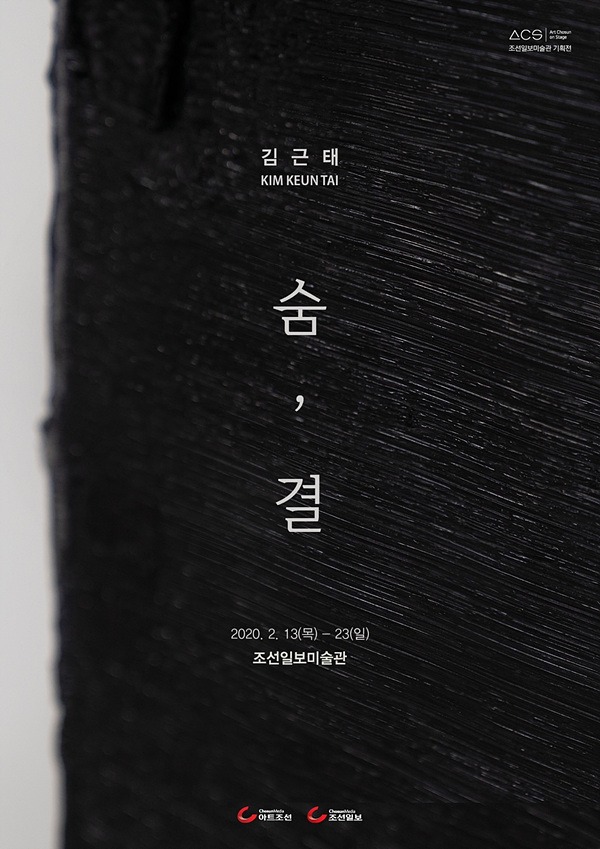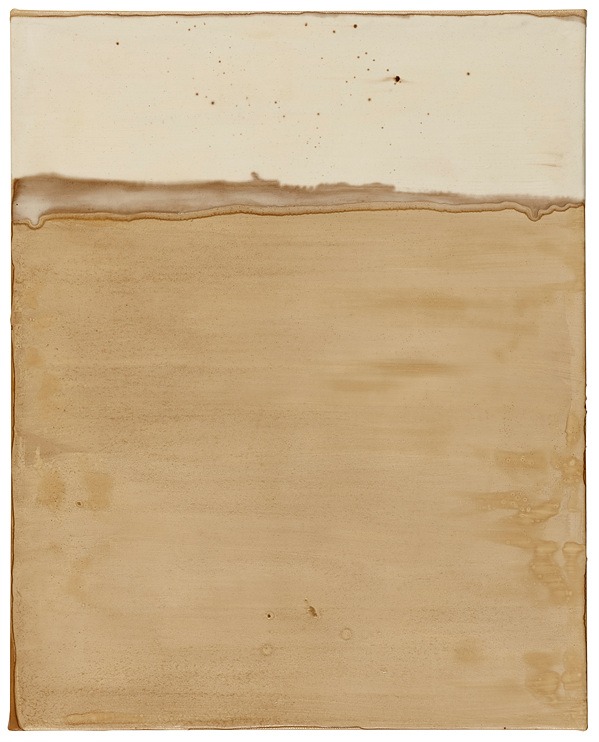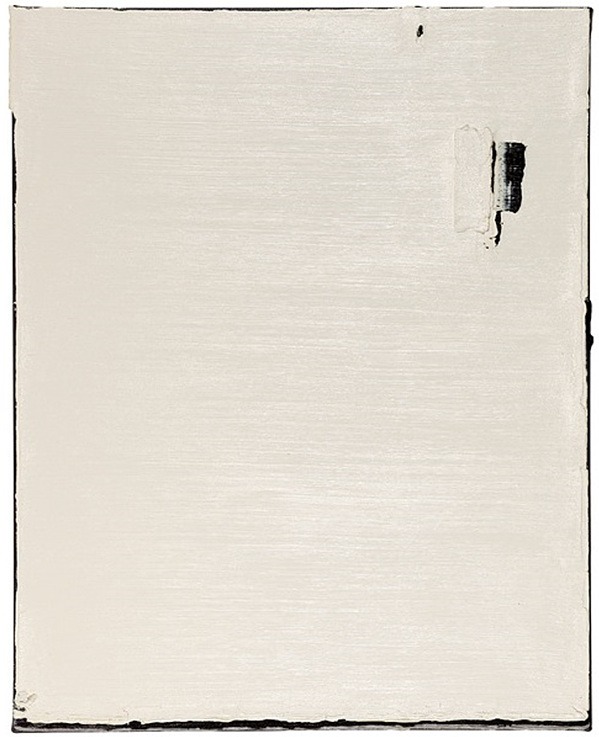
| Period| | 2020.02.13 - 2020.02.23 |
|---|---|
| Operating hours| | 10:00-18:00 |
| Space| | Chosun museum |
| Address| | 33, Sejong-daero 21-gil, Jung-gu, Seoul, Republic of Korea |
| Closed| | Open throughout the exhibition period. |
| Price| | Free |
| Phone| | 02-724-7832 |
| Web site| | 홈페이지 바로가기 |
| Artist| |
김근태
|
정보수정요청



|
|
Exhibition Information




■ Introduction to exhibitions The Chosun Ilbo will hold an exhibition titled "Art Chosen on Stage Ι Kim Geun-tae <Breath, Grainl> 展." The exhibition aims to show the world of the author's work as he pushes both his time of restraint and patience with the act of pouring. After the process of adding many colors and being covered several times through brush, the traces of the author are left in the bus with the simple colors of the color. In the process of holding back and spitting, the writer left the flaws and tears intact on top of the numerous bones. The reason why we didn't cover up the scars in everyone's lives is because they resemble our lives, which are not perfect. Breath is the most intentional and unintentional act of life. Stones and dirt breathe and breathe. Their breath continues to this day, as the celadon did, as the celadon did. When you add breath that proves you are alive to a work that would not have been done once, you only see the brush and find traces of it. In the work that only looks white or black, Grain creates a trail of past years and a few layers of overpainted, thick but very thin brush. The paths, made of brushwork, form the time and space of the day and allow viewers the thinking territory of creativity in the work. The individual exhibition, the first in three years since 2017, shows a total of 44 pieces of black work with deeper depth and work with white and stone dust. The writer has been actively exhibiting the past two years, going back and forth from Germany, Japan, Vietnam, Hong Kong and South Korea. In particular, through the Korea-Vietnam contemporary art exchange exhibition held at the National Museum of Vietnam in December, the artist was introduced as a next-generation monochrome painter linking Park Seo-bo and Lee Woo-hwan, and has emerged as a remarkable middle-aged artist. Kate Rim, who is in charge of the review of the exhibition, said, "Kim's work does not seek simplified purity through simple subtraction, but intervene in the nature of the media, which is an attractive helper, to show us something that we learned and found by interacting with each other. His painting is a personal study, a study and an epiphany he It's a human experience that is less clinging to confirmation of meaning, which exists beyond a closely decorated system of language that looks clear," he said. ■ Introduction of exhibition Kim Geun-tae graduated from Chung-Ang University's Department of Painting and began his career as a full-fledged artist in the early 1980s, when his 20s experienced a turbulent period of military rule, causing conflicts and conflicts between modernism and folk art. He recalls that young painters during this period were heavily immersed in the dramatic conceptual paintings and the flow of folk art. At that time, critics explained that the realistic art of young artists appeared as an anti-war on abstraction of older generations. Kim Geun-tae showed no interest in polar realism or folk art, which were his contemporaries, and noted his personal sexual orientation and areas of interest, independent of the style that led the 1980s and 1990s. The realm was a world of material properties of things. It would have been an abstract and vague painting with little visual instantity compared to the young trend of drawing shapes for political interest or other reasons. Since then, however, Kim Geun-tae has steadily sought the path he has chosen and his work has gained a presence. ■ Work process and features The artist began in the early 1990s with an attempt to transfer the texture of stone to canvas, which he saw while traveling to Namsan, Gyeongju, and containing stone pagodas, Buddhist statues and relief. To reproduce the properties of stone, the stone powder was mixed with glue and made an independent medium. Canvas also chose the nine-piece wide field instead of the Mapo cloth. His combination of alternative paint (stone powder + glue) and fiber canvas is the closest he can get to creating the prickly yet gentle sensation that rocks give him. Kim Geun-tae felt an artistic urge to convert material properties into canvas, and created it by synthesizing materials that could realize it. In doing so, they are agonized over the creation of such paintings without leaving any tangible clues or traces that the brush marks can bring about. Instead of using existing materials mechanically, the artist began to create and write new alternative media, imagining what effects he wanted. Kim Geun-tae felt an artistic urge to convert material properties into canvas, and created it by synthesizing materials that could realize it. In doing so, they are agonized over the creation of such paintings without leaving any tangible clues or traces that the brush marks can bring about. Instead of using existing materials mechanically, the artist began to create and write new alternative media, imagining what effects he wanted. In the early 2000s, Kim Geun-tae, who used a mixture of stone powder and glue, attempted to change the mix of stone and rubber glue. At this time, he made the material thinner than it had been before, pouring paint on the canvas and shaking the canvas from side to side to side, creating a trickle-down effect. At this time, the canvas should be moved with keen attention to the condition of the substance poured on the canvas. His paintings lead to the process of finding contacts as the mind of the vagina and the writer's efforts adjust the frequency of each other. ■ artist's note "As you follow the valley of unknown names, you often get suffocated before a world where you don't know its time and depth... (Intermedium) ... the moment I'm stuck in a pitiful situation where I can't move forward or fall back against that big wall, wind noise and a cloud without me knowingly help me get out of that unknown position. The foolish figure, immersed in the words and deceived by shapes, is seen as a ray of light in a formless form before the wall, and its boundaries are transmuted into lines and colors. " "Because I like the white color of white. Because I can see my mind. The white porcelain shows something that you can't tell from your head. Like a bird that flew in the sky all day but had no sign of flying around." "While shuddering in front of two towers of Namsan Buddhist statues, Seokguram and Gamunsa Temple, I realized that this was my root and the DNA inside me. What my body had known since I was born, my own aesthetic of the spirit that no one could imitate, I wanted to embody it." - Among Kim Geun-tae's work notes, ■ Review of works the full text of a review <Kim Geun-tae: Alchemy with the heart of paint> There is only paint in Kim Geun-tae's paintings. There is no story or topic. No mention seems to give any covert hints in connection with the work. It’s too quiet compared to the "meaningful feast" of today’s art, which passionately explains that my work has this meaning. Instead, his paintings feel free, naturally misunderstand, and gently push us into a territory that can be interpreted creatively. The painting turns his eyes to the flow and stop of the brush he moved, the resulting thickness of the paint he painted, and the collision and rupture of the paint left in a corner of the canvas. Look around for a moment and come back to the painting for a moment - there’s a magnanimity in painting that we tolerate even if our eyes are having an affair for a while - and a certain mood comes to us that we can’t immediately switch to words, which is confirmed by our eyes. It feels like the color of the paint has been created. ...(Marginal) ...the nuance of this meaning, implied by Kim Geun-tae's work, is never easy to explain. There are clearly multiple meanings that cannot be simplified by simply driving a complex world into any fundamental simple image or by simply pushing it to one side: "A abstract work relies on the material properties of the medium used." The art theory of keeping this multi-concrete and complex meaning reflects the author's real-life creation process much more deeply, but it does not smoothly become linguistic. If you gain clarity, you lose nuance. In art, nuance is not incidental decency and make-up, but essential and tate. Kim Geun-tae’s work is not a pursuit of simplified purity through simple less. It interrupts the nature of the media, which is an attractive helper, to show us something that we learned and found by talking to each other. His painting is a personal study, a study and an epiphany he It's a human experience, less clinging to confirmation of meaning, that exists beyond a tightly-decorated system of language that looks clear. -Excerpts from the review of Kate Rim (representative of Art Platform Asia)
